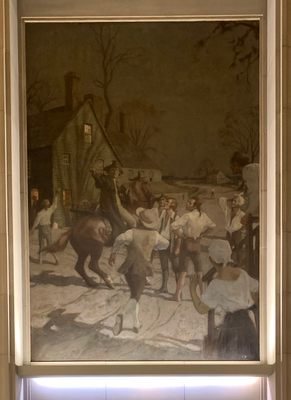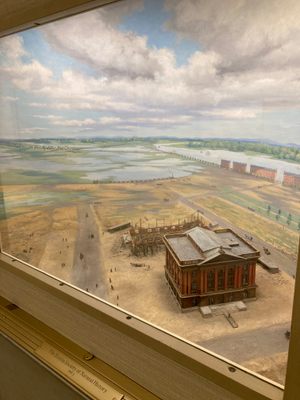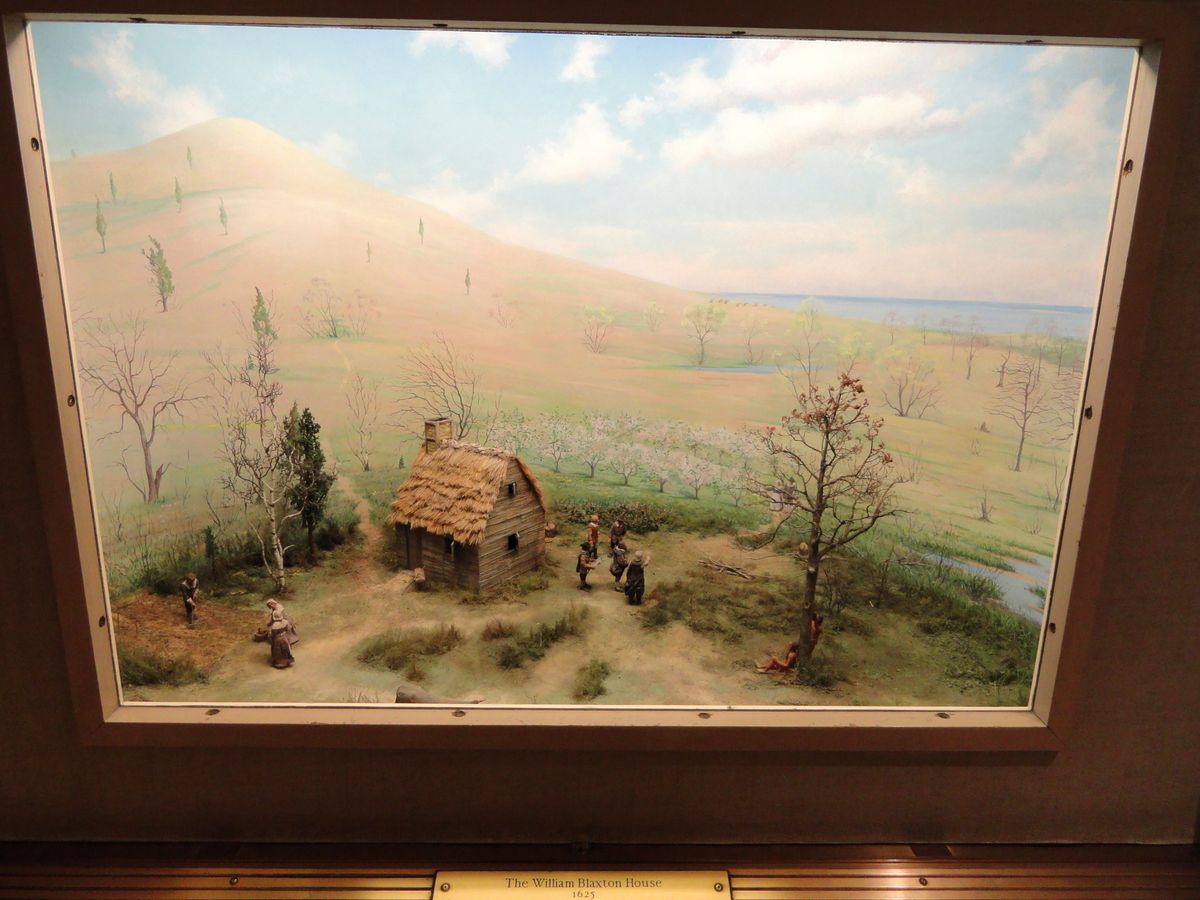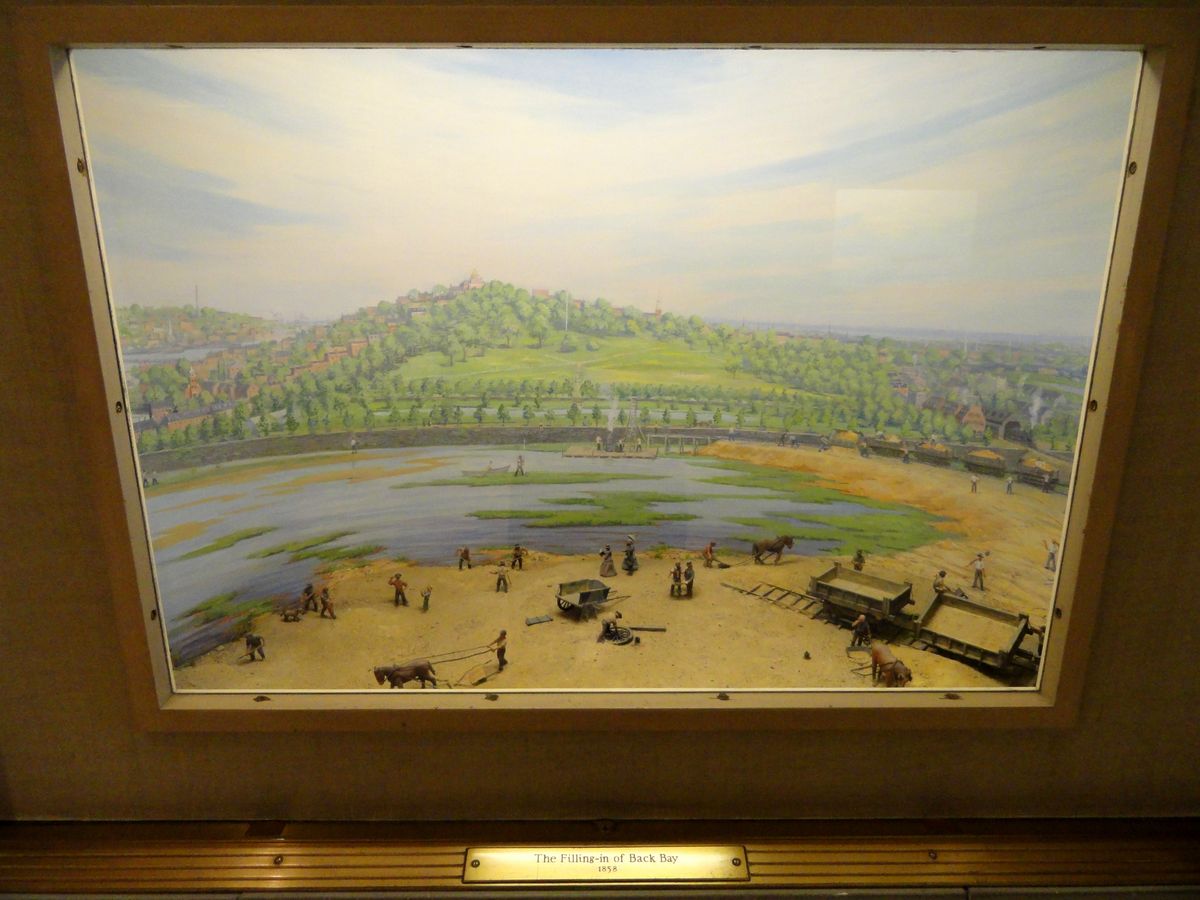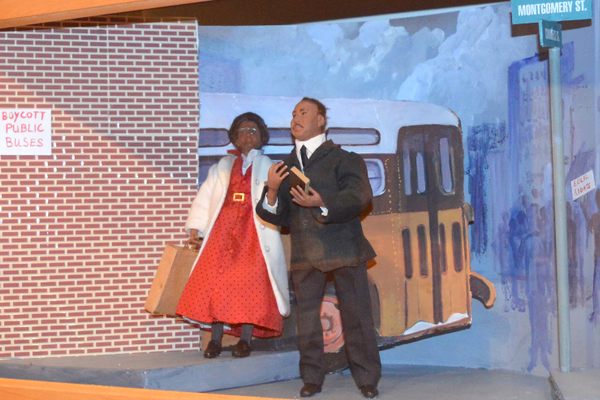About
The pedestrians on Newbury Street in the Back Bay usually walk right past the old New England Life Insurance building, today known as The Newbry. However tucked inside the monolithic gray granite building are tiny portals into the past.
For the commuters, shoppers, diners, dog walkers, tourists and students who throng one of Boston’s most lively streets every day, however, there is a reason to stop. The hallway just inside the Newbury Street entrance's enormous doors holds four windows set into the wall, two on either side. They open onto dioramas; the kind you see in museums, that show scenes from Boston’s history.
The history dioramas were commissioned by the Boston Society of Natural History in 1863 and created by Sarah Ann Rockwell. The backdrops were painted by Henry Brooks. The level of detail is amazing and they give an intriguing picture of everyday life at the time.
Ms. Rockwell put months of research into each piece, working with original blueprints to make sure each building and element was constructed to accurate scale. In their book, “Boston Curiosities,” Bruce Gellerman and Erik Sherman tell us that it took Ms. Rockwell “two weeks to make a single human figure and a month for a horse.”
There’s a lot to see in these four small tableaux. Take your time and look at the little things. Starting on the left, you'll see:
- The Boylston Street Fish weirs (2500 B.C.): When the Back Bay was still a shallow tidal marsh, the local Native American tribes would set weirs made of wooden poles on the mud flats to trap fish come to spawn in shallow water. Some of the wooden poles from these weirs were discovered in 1915 during the excavations for the Boylston Street subway. More were found during construction of the New England Life Insurance building and the John Hancock tower.
- The William Blaxton house: William Blaxton, or Blackstone, was an Anglican minister and graduate of Cambridge who came here in 1623 with a group of settlers. When they returned to England, he stayed on the Shawmut Peninsula alone, living on land that is now Boston Common. He, not the Puritans who arrived in 1630 was the original Bostonian.
- The Filling of the Back Bay (1858): The creation of land in the Back Bay was an enormous civil engineering project that began in 1857 and continued for nearly 25 years. The project brought glacial gravel from Needham to Boston by train. There it was dumped and spread to form what was called the “New Land.”
- Building the Boston Society of Natural History (1863): This building occupied the other third of the same block on which 501 Boylston Street now stands. It's still here but is now a retail store. Designed by William Gibbons Preston in the French Academic style, the redbrick and brownstone museum was constructed from 1863 to 1865. “Boston Curiosities” says that it took Ms. Rockwell seven months to reproduce the building accurately.
Now home to retail stores and a sports club at street level, The Newbry was originally a corporate office building. It occupies two thirds of a city block bounded by Berkeley and Clarendon streets.
Related Tags
Know Before You Go
The history dioramas are located in the lobby of 501 Boylston Street but on the Newbury Street side of the building. Enter through the doors on Newbury Street and you will see the dioramas on both sides of the hall. Do not use the Boylston Street entrance as you can’t walk through the lobby to the other side unescorted. This is unfortunate as there are beautiful murals on the walls in between the two guard stations that are well worth seeing. Otherwise, try to kindly ask if you are permitted to take a photo for personal use only. Also, look up at the gilded, coffered ceiling. There is no charge.
Community Contributors
Added By
Published
April 28, 2016













